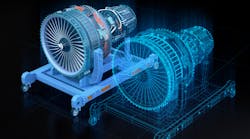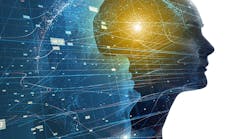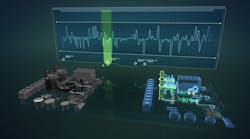Digital twins are like virtual copies that help factories work better. By analyzing these virtual models, companies can prevent costly mistakes, improve production speed, and even introduce innovations that weren’t previously considered.
What Exactly Are Digital Twins, and What Benefits Do They Offer?
Digital twins can be virtual representations of physical objects, systems, or processes that act as a bridge between the digital and physical worlds. The real-time data acquired from sensors and machines allows digital twins to offer insights for optimizing operations, enhancing efficiency, and making informed decisions.
When used in factories, digital twins offer an array of far-reaching benefits. For example, digital twins help engineers or designers anticipate equipment issues and resolve them before they escalate into costly downtime. This results in increased asset lifespan, reduced maintenance costs, and enhanced productivity.
They can also facilitate informed decision-making through simulations and scenario analyses, allowing engineers to test and validate strategies in a risk-free, virtual environment—leading to better strategic planning, faster problem-solving, and the ability to adapt swiftly to changing factory or market conditions.
In addition to their operational advantages, digital twins foster innovation and drive technological advancements. By providing a platform for continuous experimentation and prototyping, they expedite the development of new products and services, potentially shortening time-to-market.
Finally, digital twins enable manufacturers to align their sustainability goals with real-world outcomes. They can help optimize resource consumption, energy usage, and waste generation in factories, contributing to eco-friendly practices and reducing environmental impact.
What Are the Types of Digital Twins?
Digital twins are categorized into various types to effectively capture the diverse range of applications and complexities they address. Grouping digital twins allows manufacturers to tailor their implementation to specific needs, such as optimizing product design or monitoring complex manufacturing processes.
Each type corresponds to a specific focus, allowing factories to deploy digital twins that align with their unique objectives. Here are four of the most common types of digital twins.
Product Digital Twins
Product digital twins represent physical products and assets. They are used throughout the product lifecycle, from design and development to manufacturing, operation, and maintenance. Product digital twins help optimize machine or part design, simulate performance, monitor usage, and enable predictive maintenance.
Process Digital Twins
Using digital twins, we can simulate and play out manufacturing processes and other complex workflows. They highlight bottlenecks, enhance production, and up the efficiency game. They’ve also proven to be quite useful in managing supply chain operations—a challenge many businesses have grappled with, as outlined in this report.
System Digital Twins
System digital twins represent entire systems or environments, such as factories and industrial complexes, enabling holistic monitoring, analysis, and optimization of interconnected components or processes.
Asset Digital Twins
Asset digital twins focus on individual physical assets, such as machinery, equipment, or infrastructure. They facilitate remote monitoring, predictive maintenance, and performance optimization
The Future of Digital Twins
As digital twin technology continues to evolve, it will become woven into the fabric of manufacturing for any forward-looking company. From autonomous robotics to intelligent supply chains, the integration of digital twins will pave the way for smarter, more efficient, and highly responsive manufacturing ecosystems.
Francesco Rivalta, engineer at Hubs, points out that despite the innovation in digital twins technology, there's room for further refinement. For instance, creating the digital twin is quite a complex process that requires specialized hardware, software, and professionals who need to understand both the technology and the domain to which it's applied. However, he remains optimistic that advancements in AI technology will streamline and simplify these aspects to some extent.
Chandrakant Isi is a Content Distribution Specialist at Hubs, an on-demand digital manufacturing platform that was founded in Amsterdam in 2013. The platform offers easy access to a wide variety of manufacturing capabilities supplied by a global network of more than 300 manufacturing partners. Hubs was acquired by Protolabs in 2021 to bring customers the world’s most comprehensive manufacturing solution.















